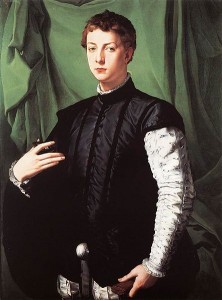
We seek contributions for an edited volume that aims to explore how spaces, images, and objects played a powerful role in codifying and conveying messages of self-fashioning for the multifold social groups of the Medicean State.
Early modern Tuscany—with the consolidation of Medici power as dukes and subsequently grand dukes, and the formation of new courtly social groups (newcomers, nobles, court officials) that fostered an increasingly ritualized society—offers an important opportunity to explore how different categories of people fashioned their identity and positioned themselves in the societal context through the display in their houses. How did artistic politics reflect, shape, negotiate, or even force, relations among familial origin/history, rank, and political/economic roles and ambitions?
We invite proposals for 6000- to 9000-word chapters that explore a variety of domestic spaces (in relation to gender and social status), focusing on the nexus connecting display, identity, and the materiality of the interior. We welcome proposals addressing both categories of people and categories of spaces, and exploring the following topics:
• Gendered domestic devotion, as well as conspicuous consumption and/or conspicuous humility/deprivation of luxury goods, especially in connection to (female and male) rituals of devoutness or sanctity.
• Courtiers and old nobilities: the construction/negotiation/ refurbishing of their identities, especially in relation to the dynastic power of the Medici family. How did newcomers—the uomini nuovi—legitimate their presence at court? How did former republican opponents position themselves, and how did they establish their identity through their patronage? How did families whose prestige and lineage predated the Medici (such as the Capponi or the Corsini) negotiate their identity, establish their position in the social fabric, or display their past?
• Agency of the domestic space and its materiality. How did specific representational spaces, such as the courtyard, the staircase, the salone, or the gallery, become spaces to display the family collections, and articulate the family identity? How was the relationship between the family and the Medici rulers established or deployed, especially in connection with the presence of portraits, the inclusion of heraldry, or through specific iconographic allusions?
Please send a 500-word abstract, along with your CV to Francesco Freddolini, Luther College, University of Regina (francesco.freddolini@uregina. ca) and Cinzia Maria Sicca, Università di Pisa (cinzia.maria.sicca@unipi.it) by June 30, 2015.

Leave a Reply
You must be logged in to post a comment.